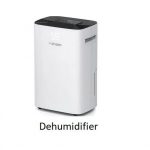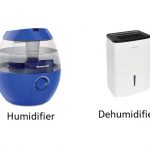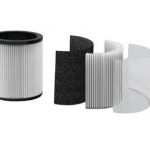Are air purifiers with ionizers safe?
Are you wondering whether air purifiers with ionizers are safe or not? Most of us have rushed to get ourselves air purifiers. But there are several types of air purifiers on the market. And this has left many wondering which air purifier is safe and which is not. Some people suggest that air purifiers with ionizers are not really safe.
Air purifiers use different technologies depending on the model to improve our air quality. This technological difference is the one that makes air purifiers different in regards to how they operate.
The ionizer is among the many technologies used in air purifiers. There is no doubt that air purifiers with ionizers work effectively. They can remove airborne impurities to make air safe for breathing.
However, there have been concerns regarding their safety. Different scholars assert that some air purifiers with ionizers actually pollute the air. This has left many confused about what is the real truth. But, we can confirm that air purifiers with ionizers are more or less safe.
In this article, we discuss what makes air purifiers with ionizers safe.
How Air Purifiers with Ionizers Compare with Other Models
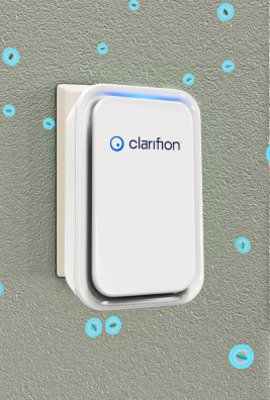
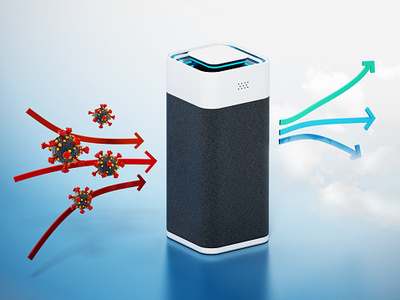
Most types of air purifiers can effectively remove airborne impurities. Air purifiers with ionizers are not different.
Air purifiers with ionizers are able to remove pollutants from the air without pulling them through the unit. These air purifiers release negatively charged particles (ions) that get attached to small airborne contaminants, making them heavy. As the pollutants become heavier, they fall to the ground. This helps the air purifier filters to not get clogged. They do not get clogged because they trap less impurities thanks to the ionizers. Certainly, this protects the filters and helps them last longer.
Additionally, as contaminants fall on the ground, you can vacuum the whole place. This prevents them from coming back into the air. However, if they attach to walls, it may be hard to remove them. This leaves gaps for the contaminants to get introduced back into the air.
Also, air purifiers with ionizers can remove airborne particles that are too small to be trapped by filters. This is actually different from other air purifiers using only filters such as HEPA, carbon, and pre-filters.
These models without ionizers use fans to pull air towards the filters. As the air passes through filters, pollutants are removed, and then the clean air is pushed back into circulation. The greatest advantage of these air purifiers over those with ionizers is they do not release any byproduct.
When using air purifiers without ionizers, you need to frequently replace the filters. This is because trapped pollutants can easily build up on the filters. This can make filters to become a breeding place for bacteria and molds. When released back into the air, they may be harmful. Besides, the filters may get clogged and start malfunctioning.
How Air Purifiers with Ionizers Work

These air purifiers work by releasing negatively charged ions into the air. The ions meet the positively charged pollutants and get attached to each other. This makes the air contaminants heavy forcing them to fall or get attached to a nearby surface.
These ions do not have profound effects on human health when inhaled. In 2013, the Journal of Negative Results in Biomedicine confirmed that ions do not cause harmful effects to the respiratory system.
The journal states that negatively charged ions are natural and are even produced by the sun. So, in the rightful amount, ions can improve the air quality making it safe for breathing.
However, what has enacted doubts about the safety of these air purifiers is their release of ozone as a byproduct. Scientists highlight that continued exposure to high amounts of ozone can be dangerous. This has generally created uncertainties about the safety of air purifiers with ionizers.
Air Purifiers with Ionizers Controversy
Although these types of models have been on the market for a long time, there are arguments that downplay their effectiveness.
In the past, many ozone-generating products were being marketed as air purifiers. In 2006, a study by J Air Waste Manag Assoc found out that many models including the famous Ionic Breeze released too much ozone.
The study portrays that some air purifiers with ionizers release more than 150 PPB of ozone. This makes them unhealthy according to EPA guidelines.
This could be the reason that tempted EPA to investigate all air purifiers on the market. Their findings indicate that most ozone generators were instead marketed as air purifiers. This heavily damaged the reputation of air purifiers with ionizers.
Ozone generators are significantly different from air purifiers. This is because ozone generators are designed to specifically release a lot of ozone to remove pollutants.
Therefore, it is for this reason that people need to change their mindset regarding air purifiers with ionizers. It is true some air purifiers with ionizers may not be safe. This is because there are some that maybe generating more than 150 PPB of ozone as a byproduct. Lets highlight some negative health effects of air purifiers with ionizers.
Potential Negative Effects of Air Purifiers with ionizers
If an air purifier with ionizers generates too much ozone, it can be dangerous for human health. Some of the effects of inhaling high amounts of ozone include:
- Worsening asthma
- Respiratory infections
- Lung inflammation
- Chest pain
- Continuous coughing
- Throat irritation
- Difficulty in breathing
What Makes Air Purifiers with Ionizers Safe or Not?
Upon reading the above information, you realize that all air purifiers with ionizers produce ozone. However, the amount of ozone produced varies depending on the model. This is what makes them safe or unsafe.
According to EPA, air purifiers that produce less than 50 parts per billion (PPB) are generally safe for everyone. They also indicate that 51-100 PPB for an eight-hour run is moderate.
Furthermore, in the same run time, 101-150 PPB maybe tolerable, but can be unhealthy for sensitive people. However, anything above 150 PPB for an average eight-hour run is unhealthy.
Ultimately, an air purifier generating 0-150 PPB of ozone can be deemed safe. But those generating more than 150 PPB, are subsequently unhealthy. In fact, most air purifiers producing more than 150 PPB of ozone were banned from the market. Others cannot be shipped to various states such as California.
Our Verdict
Air purifiers with ionizers generating the rightful amount of ozone are safe. Those generating between 0-150 PPB of ozone are safe and may not have any health implications. However, although 101-150 PPB is deemed safe, it may not be good for sensitive people like babies.
So, to be on the safer side, we recommend using models that produce less than 50 PPB of ozone. Therefore, if you are planning to purchase an air purifier with ionizers, carefully check for the amount of ozone being generated. If you already have one, check your user manual for the ozone produced.
Conclusion
In general, air purifiers with ionizers are safe. Although they generate ozone as a byproduct, most of them produce less than 150 PPB. This amount is good for our health. However, this does not mean all air purifiers on the market are safe. Some do release more than 150 PPB of ozone, which is not safe. Therefore, you need to be careful when selecting air purifiers with ionizers.
Featured Posts
Latest Posts
- 5 Best Humidifier For COPD
- 5 Best Humidifiers For Greenhouse
- 5 Best Humidifiers For Electric Heat
- 5 Best Humidifiers For Pregnant Women
- 5 Best Humidifiers For Yoga Studio
- 5 Best Humidifiers For Eczema
- 5 Best Air Purifiers with Permanent Filters
- 5 Best Air Purifier With A Humidifier
- 5 Best Air Purifiers For Resin Printing
- 5 Best Air Purifiers for Eczema
- 5 Best Air Purifier With Fan Combo
- 5 Best Air Purifier For Lung Disease
- 5 Best Humidifiers For Essential Oils
- 5 Best Humidifiers for Elderly
- 5 Best Humidifiers For Lash Extensions
- 5 Best Humidifiers For Cough
- 5 Best Humidifiers For Fireplace
- 5 Best Humidifiers for Humidor
- 5 Best Humidifiers For Pets
- 5 Best Humidifiers For Weed
